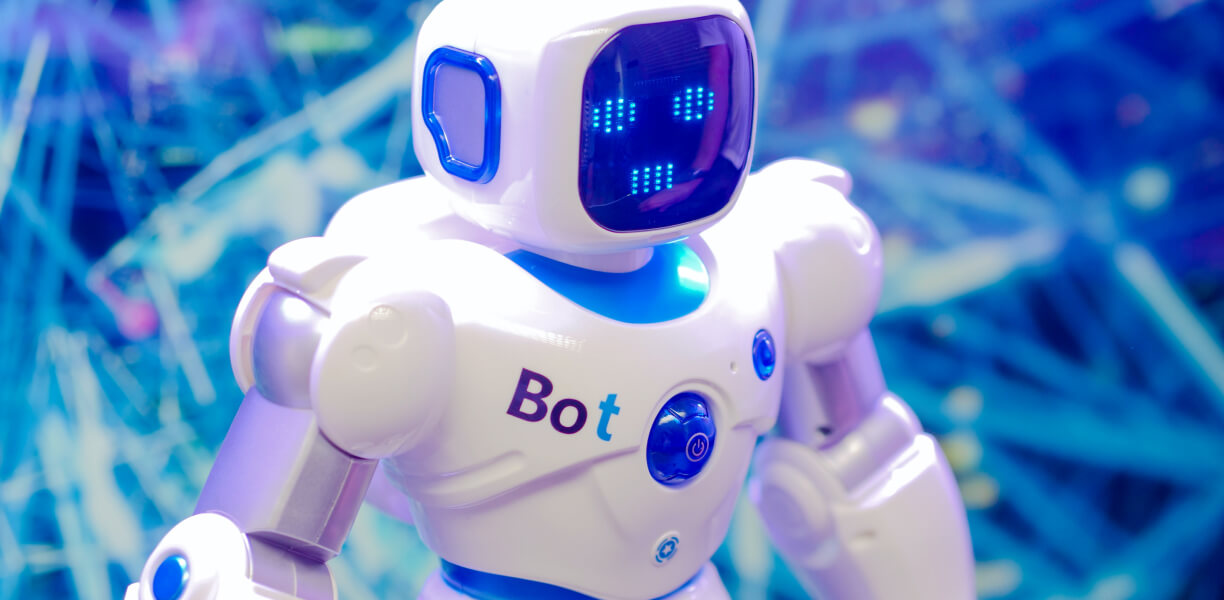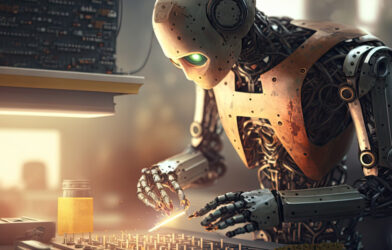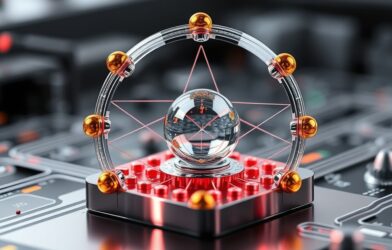The industrial sector has long been at the forefront of technological change, from the steam engine of the Industrial Revolution to the automation revolution in the 20th century. Today, another evolution is occurring with the convergence of artificial intelligence (AI) and robotics. AI-powered robotics is transforming manufacturing, creating more intelligent, adaptable systems that can perform complex tasks, optimize production, and unlock new levels of efficiency. As these technologies evolve, the industrial sector is poised to experience profound changes, leading to smarter manufacturing processes and greater innovation.
In this article, we discuss how AI is transforming robotics in manufacturing, the key advantages of AI-powered robots, and the future of smart automation in industrial environments.
1. Smarter Robots: From Pre-programmed to Autonomous Systems
Traditional industrial robots have typically carried out pre-programmed instructions. These robots excel at repetitive, mundane tasks, but they are rigid and unable to adjust to changes in their environment. AI is fundamentally altering this by enabling robots to learn, adapt, and make decisions in real-time.
AI-driven robots now use machine learning algorithms to analyze data from their environment and alter their behavior accordingly. This means that instead of following rigid instructions, these robots can respond to dynamic conditions on the factory floor, such as sudden equipment breakdowns or changes in the material being used.
For example, in the automotive industry, AI-powered robots are used to weld and assemble complex components. These robots can adjust their actions based on real-time feedback, ensuring precision and maintaining high quality throughout the process. The move toward autonomous systems significantly reduces the need for human intervention, enabling robots to take on more sophisticated roles in manufacturing and increasing overall productivity.
References:
2. Improved Efficiency and Productivity
AI is revolutionizing manufacturing by improving efficiency and productivity. Unlike traditional robots, which are limited to pre-defined tasks, AI-powered robots can work continuously without fatigue and can handle tasks that would otherwise be too time-consuming or error-prone if done manually.
One of the primary ways AI is improving productivity is through real-time optimization. AI-driven robots can continuously analyze production data, detect inefficiencies, and make adjustments to improve performance. For example, AI algorithms can adjust the movement of robotic arms on an assembly line to reduce idle time and speed up production cycles. These small adjustments, made continuously throughout the manufacturing process, can lead to substantial productivity gains over time.
Additionally, AI is enhancing predictive maintenance in manufacturing. By analyzing data from sensors on machines and robots, AI can predict when components are likely to fail, allowing maintenance teams to perform repairs before a failure occurs. This not only minimizes costly downtime but also ensures that production remains efficient.
References:
3. Enhanced Quality Control
Quality control is one of the most significant advantages of integrating AI with robotics in manufacturing. AI-powered robots, equipped with computer vision and machine learning algorithms, can inspect products with unparalleled accuracy and consistency. These robots can detect defects that would be nearly impossible for human workers to spot.
In high-precision industries such as electronics and aerospace, where quality control is critical, AI robots are becoming invaluable. AI robots can scan and inspect small components for minute defects, ensuring only high-quality products are allowed to pass through the production line. These robots not only catch defects that humans might miss but also improve over time, as the AI learns from past inspections.
For example, in the production of electronics, AI-powered robots with advanced cameras can monitor products at different stages, comparing them to ideal templates. If a discrepancy is detected, the robot can notify human workers or make immediate adjustments to correct the issue. This reduces waste, increases product reliability, and boosts customer satisfaction.
References:
- AI and Machine Vision: Revolutionizing Quality Control
- How Robotics and AI are Improving Quality Control
4. Greater Flexibility in Manufacturing
One of the historical challenges in manufacturing has been the rigidity of robotic systems. Traditionally, robots were designed to perform specific tasks, making it difficult to adapt to product redesigns or fluctuations in production volume. AI is changing this by making robots more adaptable and versatile.
AI-powered robots are easily reprogrammed to handle a wide range of tasks, from assembly and welding to packaging and quality inspection. This adaptability is particularly useful in industries where product lines change frequently or where manufacturers need to quickly scale production up or down.
For example, in the consumer goods industry, AI robots can be reprogrammed to handle various products and packaging sizes with minimal downtime. This adaptability reduces lead times, allows manufacturers to respond quickly to changes in market demands, and enhances overall efficiency.
Collaborative robots, or “cobots,” are also gaining traction due to AI advancements. These robots are designed to work alongside human workers and can even anticipate human movements. This makes them safer and more effective in collaborative settings. By allowing robots to handle physically demanding or dangerous tasks, human workers can focus on higher-value activities, improving overall productivity.
References:
- Flexibility in Manufacturing with AI-powered Robotics
- Collaborative Robots: The Future of AI in Manufacturing
5. Data-Driven Manufacturing and Predictive Analytics
Data is at the core of AI’s effectiveness in manufacturing. AI-powered robots are equipped with sensors that collect vast amounts of data, from machine performance to product quality. Machine learning algorithms analyze this data to recognize patterns and optimize processes.
One of the most powerful applications of AI in manufacturing is predictive analytics. By analyzing past data, AI can predict future outcomes, such as when equipment is likely to fail or when demand for certain products may increase. This allows manufacturers to address potential issues before they arise, leading to cost savings and improved operational efficiency.
For example, AI can help optimize the supply chain by predicting when raw materials will be needed and ensuring they are delivered on time. This reduces inventory costs and prevents production delays due to shortages. Additionally, predictive analytics can be used to anticipate market shifts and adjust production accordingly, enabling manufacturers to remain competitive in a dynamic environment.
References:
6. Challenges and the Future of AI-Powered Robotics in Manufacturing
While AI-powered robotics is revolutionizing manufacturing, it is not without its challenges. One of the primary hurdles is the need for skilled workers who can manage and maintain these complex systems. As robots become more autonomous, the role of human workers is shifting from performing manual tasks to monitoring and fine-tuning robotic systems. This shift requires substantial investment in training and upskilling the workforce.
Moreover, AI-driven robotics systems require robust technological infrastructure, including high-speed data networks, cloud computing, and cybersecurity protections. Manufacturers must also address ethical and regulatory challenges associated with AI, such as ensuring transparency, avoiding bias, and securing systems from potential cyber threats.
Looking to the future, the potential for AI-driven robotics in manufacturing is vast. We can expect even more sophisticated robots that can learn from human workers, cooperate in real-time, and autonomously handle increasingly complex tasks. The development of “smart factories,” in which robots, machines, and humans collaborate seamlessly in a connected environment, is also on the horizon.
References:
AI is revolutionizing robotics in manufacturing, bringing unprecedented levels of intelligence, efficiency, and flexibility to production lines. Smarter robots are enhancing quality control, optimizing workflows, and enabling manufacturers to respond more quickly to changing market demands. Despite challenges such as the need for skilled labor and infrastructure investment, the future of AI-powered robotics in manufacturing is promising.
As AI technologies continue to evolve, the integration of AI and robotics will reshape the manufacturing landscape, driving innovation, productivity, and competitiveness for years to come. With continued investment and collaboration, AI-powered robotics will unlock new possibilities and help manufacturers stay ahead in an increasingly digital world.










